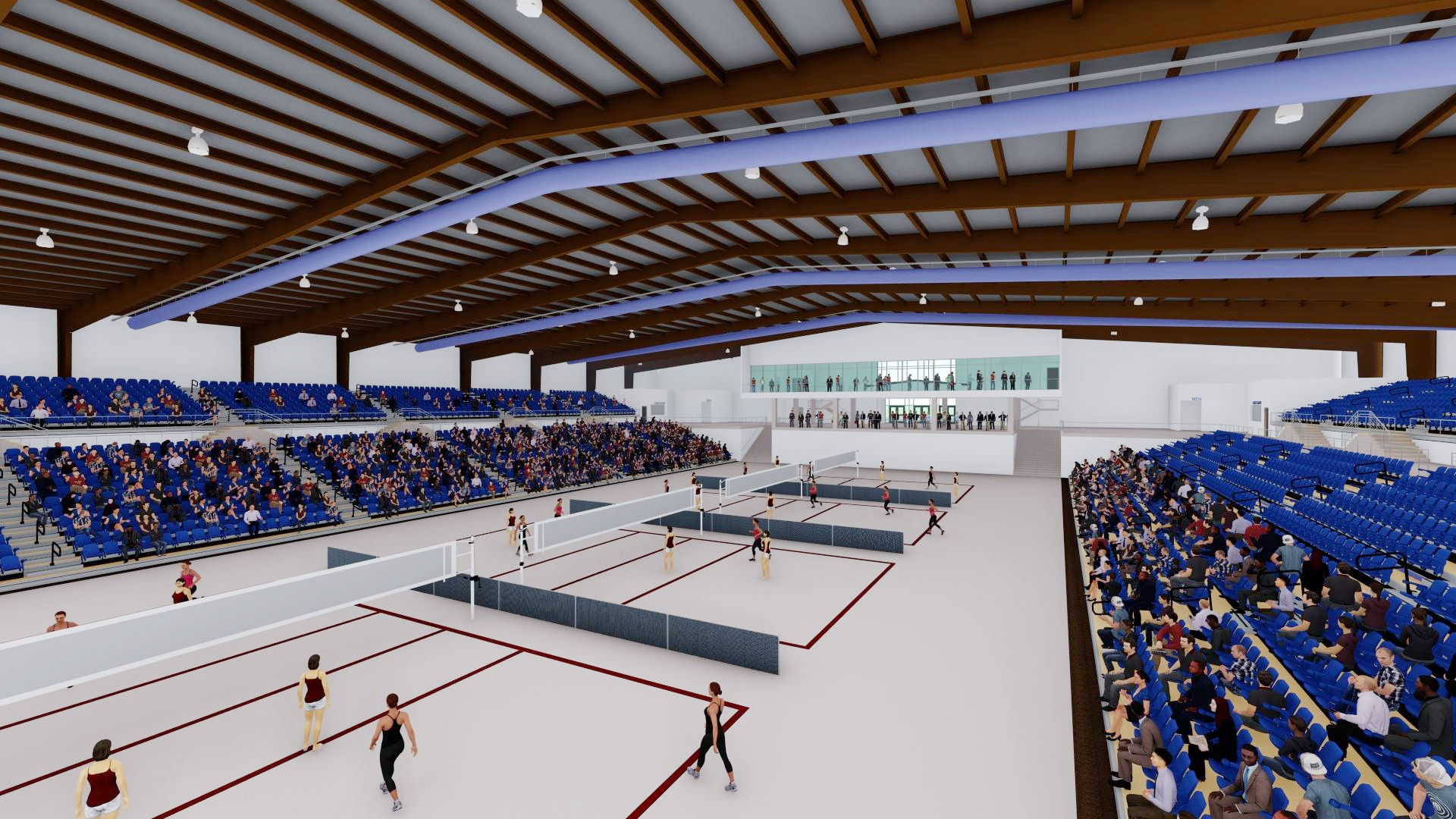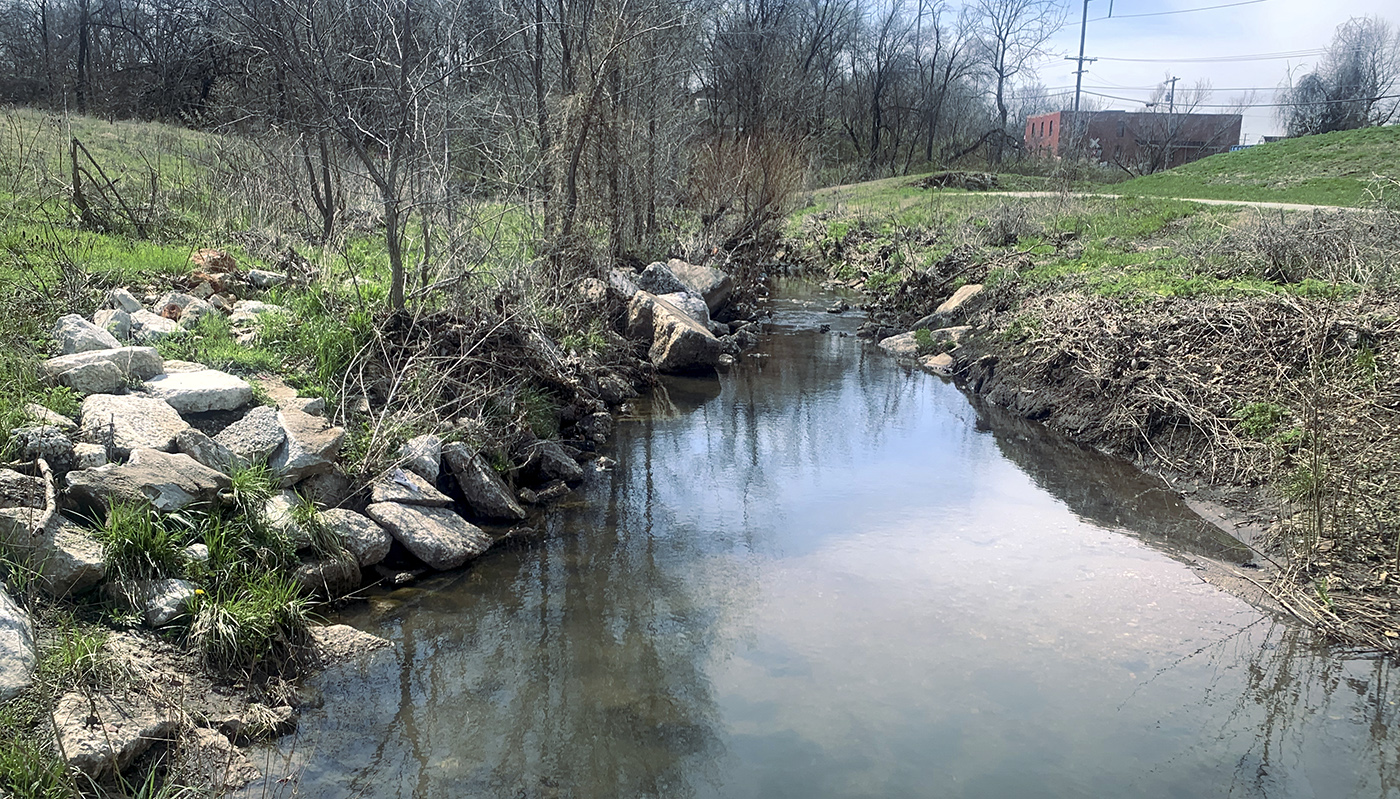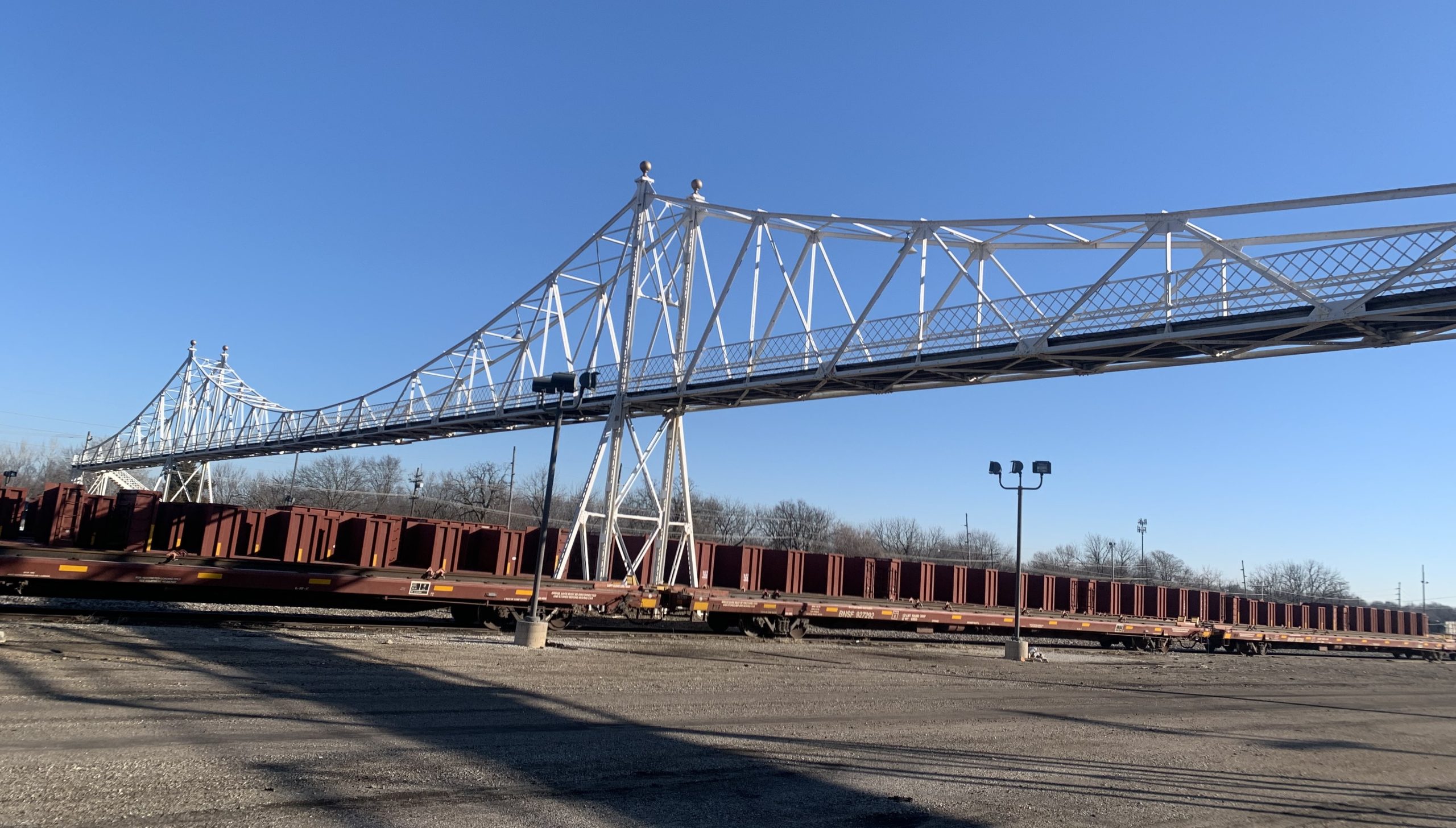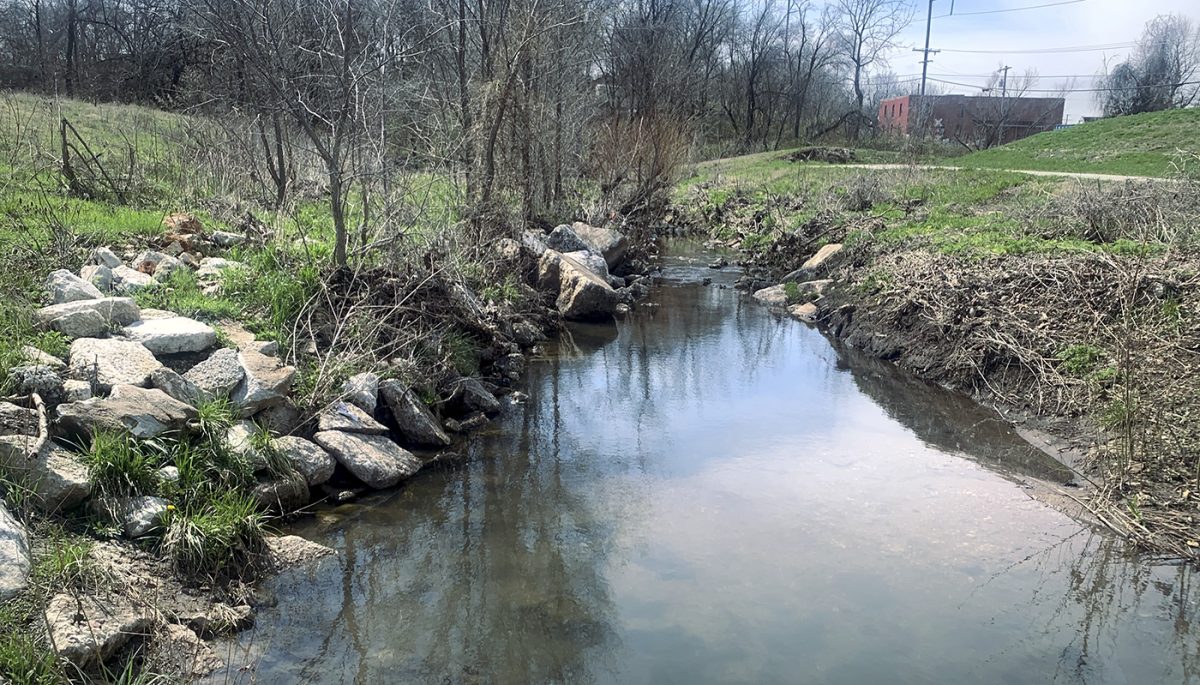At least six Springfield and/or Greene County projects stand to benefit from $42.5 million in funding coming via the American Rescue Plan Act (ARPA), which passed through the Missouri General Assembly hours before a legal deadline for budget lawmaking.
The plans for the money include improving sports facilities at Springfield's Cooper Park, boosting a non-profit science center, funding an arena project at the Ozark Empire Fairgrounds and restoring a key landmark at the heart of Commercial Street.
House Bill 3020 contains $3.4 billion in spending tied to ARPA funds for expenses, grants, capital improvement projects, planning costs, renovations, equipment and other expenses. The bill spells out how funding is to be allocated to different state government departments, and then how those state government departments are obligated to spend the funding.
By a final vote of 114-16, the ARPA appropriations bill cleared the Missouri House of Representatives for true agreement and final passage just after 2 p.m. in Jefferson City on Friday afternoon. Rep. Cody Smith, R-Carthage, served as bill handler in the Missouri House.
“There has been a lot of conversation about this bill, some mixed feelings,” Smith said. “It ranges all the way from very thrilled and pleased about what's in the bill and what this is paying for all the way to confusion and uncertainty and discontent about what is in this bill.”
Rep. Rasheen Aldridge, D-St. Louis, offered up some of the discontent.
“There is a lot of good stuff in this bill, I want to start with that,” Aldridge said, adding that he felt House Bill 3020 was a case of the Missouri Senate directing the House on what to do. “We let the other side basically go to town on this bill. We let the Senate go the buffet, and the only thing they gave us was the croutons on the salad.”
Aldridge suggested that the Missouri General Assembly could have let the bill die out by the 6 p.m. deadline, and that Gov. Mike Parson could call a special session to allow more debate and amending in the House.
“(The Senate) ate good, and now they just expect us to sign off on it,” Aldridge said. “We can come back, special session, do it the right way.”
Aldridge was one of the 16 “no” votes.
Earmarking is against the rules of the Missouri General Assembly, but certain conditions may be tied to money. In the language of House Bill 3020, money for Springfield is commonly set aside for “any city with more than 160,000 but fewer than 200,000 inhabitants.” As of the 2020 U.S. Census, Springfield’s population was about 169,000 people, making it the only city in Missouri that falls within the range of the appropriations spelled out in several places in House Bill 3020.
Some of that language was a sticking point for Rep. Peter Meredith, D-St. Louis, the ranking minority member of the House Budget Committee.
“There is so much good in this, I'm sure of it. The problem is I don't know what's in it,” Meredith said of House Bill 3020. “Even reading it, I don't know what they're referring to.”
Meredith opted not to vote “yes” or “no” when the bill came up for final passage. Instead, he marked himself “present” for the vote. House Minority Leader Crystal Quade, D-Springfield, also marked “present” for the final vote.
Rep. Curtis Trent R-Springfield, Alex Riley, R-Springfield, Betsy Fogle, D-Springfield, and Craig Fishel, R-Springfield, all cast “yes” votes.
“It was going to go through a vetting process with accountability, transparency, and I would argue some more fiscal responsibility. This is just who managed to negotiate in a room behind closed doors to get their piece in and how much did they say was needed for it,” Meredith said.
The Senate committee substitute for the ARPA appropriations bill passed the Missouri Senate by a 26-5 vote. State Sen. Lincoln Hough, R-Springfield, was among the 26 affirmative votes, while State Sen. Eric Burlison, R-Battlefield, and State Sen. Mike Moon, R-Ash Grove, were among the five “Nays.”
The bill reached the Missouri House of Representatives on May 6, the second-to-last Friday of the 2022 legislative session. By state law, any bills must be truly agreed upon and finally passed by 6 p.m. on May 14. Budget bills, however, had a deadline of May 6, 2022.
ARPA appropriations for Springfield specified in HB3020
$13.5 million — Cooper Park
Cooper Park is located on East Pythian Street and houses 18 soccer fields as part of the Lake Country Soccer Complex. Cooper Park also houses a five-field baseball complex, and the Cooper Tennis Center, which features indoor and outdoor tennis courts. The language in the appropriations bill specifies a 127-acre sports complex, which matches the exact acreage of Cooper Park.
The plan is to convert eight fields from grass to artificial turf and add more seating for spectators, restrooms, locker rooms, lights for games at night and improvements to fields that will remain natural grass. With more turf, it's expected that Springfield can play host to tournaments in soccer and in other sports.
The ARPA funding will funnel through the Missouri Department of Economic Development, and requires a local match on the part of local organizations, including the Springfield-Greene County Park Board.
According to the Forward SGF master planning documents, Springfield parks generate $13 million to $15 million annually for the local economy. Facilities host more than 50 national, regional, state and local sports tournaments.
Parks and recreational opportunities were ranked highly by Springfield residents who participated in community outreach efforts to gather input, during which 45.2 percent of resident questionnaire respondents voted park and outdoor assets as Springfield’s greatest strength.
$500,000 — Discovery Center of Springfield
While the law spells out “a non-profit science center,” the Discovery Center of Springfield is the only educational resource center of its kind serving southwest Missouri. It is eligible for a 50/50 match grant awarded through the Missouri Department of Economic Development.
According to its website, the Discovery Center offers “summer workshops for individual children, outreach programming, and distance learning,” plus regular educational events, community projects, field trips and private party hosting.
$10 million — Ozark Empire Fairgrounds

House Bill 3020 spells out a $10 million award “for planning, design and construction for a non-profit organization dedicated to preserving and cultivating southwest Missouri’s rich agricultural heritage by supporting youth in agriculture.”
The plan includes construction of a multipurpose arena and youth agriculture education center, which “will be a true jewel in the crown of the Queen City,” according to the fair foundation’s website. The arena is to be built to host trade show events, indoor festivals, livestock shows, archery competitions, volleyball matches, rodeo events and other sports.
The arena carries an estimated price tag of somewhere between $12-15 million. It would be 93,000 square feet, including a 20,000-square-foot education center and enough capacity for 6,800 seats, according to the Ozark Empire Fair Foundation’s website. The Springfield City Council voted 8-0 to pass a bill to hand off $5 million from the Missouri Office of Administration to the Ozark Empire Fair Foundation on March 21, and so the allocation from the state stands to fund the project in full.
The money for the Ozark Empire Fairgrounds will pass through the Missouri Office of Administration
$6 million — Springfield-Greene County Library District
The Office of the Lieutenant Governor will be responsible for administering $6 million “for maintenance and improvements of a library district,” that serves Springfield and Greene County, “provided that local match be provided in order to be eligible for state funds.”
$5 million — Jefferson Avenue Footbridge
The Missouri Department of Transportation will be obligated to contribute funding for maintenance and improvements to the Jefferson Avenue Footbridge, which spans 13 sets of train tracks immediately north of Commercial Street. The footbridge is a historical landmark synonymous with the Commercial Street district.
The Springfield City Council put $3.2 million in the public works budget to rehabilitate the bridge in 2021, but the lowest bid that came back for a contractor willing to accept the project was $5.8 million. With such a wide discrepancy, City Council members and other stakeholders with an interest in restoring the footbridge opted to wait to look for additional funding to refurbish the bridge. A local match will be required in order to satisfy the funding requirement handed down in House Bill 3020.
Why care?
The Jefferson Avenue footbridge is closed due to structural deficiency. More than a route of safe passage, it is a landmark on historic Commercial Street. The estimated cost to repair or replace the bridge is about $2 million more than originally thought in 2021.

The scope of the project included the repair and/or replacement of corroded or lost steel, the replacement of wood decking, the replacement of stairs, the addition of elevators on the north and south bridge approaches to make it accessible to all and compliant with the Americans with Disabilities Act.
Lyon Avenue sits on the west side of the Historic C-Street District, while Jefferson Avenue is on the eastern end. They bookend a BNSF rail yard that sits north of Commercial Street.
The Jefferson Avenue footbridge was built by the American Bridge Company in 1902. The design is a cantilevered Warren through truss. The footbridge was property of the Burlington Northern Santa Fe Railway Company, until BNSF sold the bridge to the city of Springfield for $1 in 1998. The bridge was restored in 2002, ahead of its centennial celebration.
$7.5 million — Jordan Creek daylighting
The bill language contains an obligation to the Missouri Department of Natural Resources, “for the maintenance and improvements of a project that serves as an urban amenity,” within the boundaries of a city of Springfield’s population range of 160,000-200,000 people. A local funding match is required in order for Springfield to receive funding from the Missouri DNR for water infrastructure work.
In November 2019, the Springfield City Council looked at preliminary concepts for a plan to turn part of Jordan Creek into a community space. “Daylighting” is a term for opening up underground streams and/or restoring the stream to a more natural condition.

The Jordan Creek daylighting project is a plan to unearth the underground section of the creek downtown, which proponents say will reduce flooding risks, improve water quality and create an outdoor greenspace for the community to enjoy, which will then spur economic growth downtown.
On June 1, 2021, design consultants presented the city with a “string of pearls” concept for daylighting Jordan Creek. It would include the development of a primary site between West College Street and West Wall Street, generally northwest of the Park Central Square. The other two pearls in the string would be a revitalized Founders Park, and revitalization in the East Meadows area, the collective name for the lands that include Jordan Valley Park, Hammons Field and the nearby creek.




